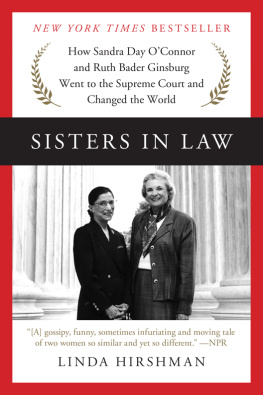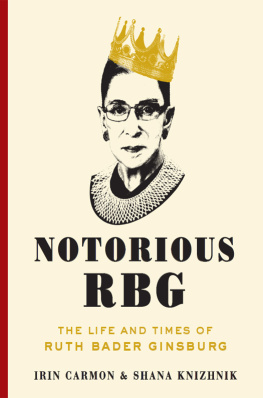 | Canterbury Classics
An imprint of Printers Row Publishing Group
9717 Pacific Heights Blvd, San Diego, CA 92121
|
Compilation 2022 Printers Row Publishing Group
All rights reserved. No part of this publication may be reproduced, distributed, or transmitted in any form or by any means, including photocopying, recording, or other electronic or mechanical methods, without the prior written permission of the publisher, except in the case of brief quotations embodied in critical reviews and certain other noncommercial uses permitted by copyright law.
Printers Row Publishing Group is a division of Readerlink Distribution Services, LLC. Canterbury Classics and Word Cloud Classics are registered trademarks of Readerlink Distribution Services, LLC.
Correspondence regarding the content of this book should be sent to Canterbury Classics, Editorial Department, at the above address.
Publisher: Peter Norton Associate Publisher: Ana Parker
Art Director: Charles McStravick
Senior Developmental Editor: April Graham
Editor: Traci Douglas
Production Team: Beno Chan, Julie Greene, Rusty von Dyl
Image credit: Rob Crandall/Shutterstock.com
eBook ISBN: 978-1-6672-0114-6
eBook Edition: June 2022
Editors Note: The pieces in this book have been published in their original form to preserve the authors intent and style.
Contents
In very recent years, a new appreciation of womens place has been generated in the United States.
S o wrote the young Ruth Bader Ginsburg in her first Supreme Court brief [pp. 144]. The case, decided unanimously in November 1971, was Reed v. Reed. It is not as well-known as Brown v. Board of Education or Roe v. Wade, but it made headlines in its day and it reverberates still. It marked the first time the Supreme Court had ever found that a government policy that discriminated on the basis of sex violated the Constitutions guarantee of equal protection. It also introduced Ruth Bader Ginsburg to the world and so, fittingly, it introduces this collection of her writings.
There are other names besides Ginsburgs on the brief, and she did not actually argue the case, which concerned a state law that automatically and arbitrarily preferred men over women to be chosen to administer the estates of people who died without naming an administrator. But Ginsburg was the author of what has come to be called the grandmother brief for its multifaceted argument for why, nearly two hundred years after adoption of the Fourteenth Amendments Equal Protection Clause, sex discrimination should finally be recognized as a constitutional harm. Nearly every subsequent argument on behalf of sex equality, including the half dozen cases that Ginsburg herself argued and won during her pre-judicial career, drew on the briefs deep research and reflected its passion.
The title of this book is Ruth Bader Ginsburg Dissents, and, indeed, it was her powerful dissenting voice that earned her the Notorious RBG nickname during her final years on the Supreme Court. (She relished the nickname, bestowed on her by two young women, Irin Carmon and Shana Knizhnik, in their 2015 book, Notorious RBG: The Life and Times of Ruth Bader Ginsburg.) But she was, in fact, in the majority more than twice as frequently as she was in dissent. During her 27-year tenure, from her appointment by President Bill Clinton in 1993 until her death from pancreatic cancer on September 18, 2020, she wrote 115 dissenting opinions; however, she also wrote 216 majority opinions, and 87 opinions concurring with the majority. These statistics make the occasions when she felt compelled to dissent all the more interesting.
Dissent did not come naturally to this soft-spoken woman. A lecture she gave while she was a judge on the federal appeals court in Washington, D.C., described the effective judge as one who speaks in a moderate and restrained voice and who strives to persuade and not to pontificate. Not that Ruth Bader Ginsburg ever pontificated, but what became clear over time, as new appointments turned the Supreme Court steadily to the right, was that when she was unable to persuade a majority of her colleagues, she turned her persuasive powers on audiences outside the court. By the end, she was also speaking to history.
In one of her most notable dissenting opinions, her audience was, explicitly, Congress. The case was Ledbetter v. Goodyear Tire & Rubber Company [pp. 197215], decided in 2007. Lilly Ledbetter was the only woman in her managerial level at a Goodyear plant in Alabama. She learned only after she retired that, for years, she had been paid less than any of the men. She sued the company for pay discrimination under the Civil Rights Acts Title VII, which bars sex discrimination in the workplace. The law required a complaint to be filed within 180 days after the alleged unlawful employment practice occurred. Ledbetters lawyers argued that because a new act of pay discrimination occurred with each paycheck, her lawsuit was timely. A federal district court jury in Gadsden, Alabama, ruled in her favor. But by a vote of 5 to 4, the Supreme Court held that Ledbetter should have sued years earlier, when the disparity began.
Ginsburgs dissenting opinion spoke for all four dissenters. She accused the majority of ignoring the real-world characteristics of pay discrimination, which occurs over time, shielded from the victims knowledge by the secrecy that commonly prevents employees from learning what others are making. This was not a constitutional case, Ginsburg pointed out. It presented a simple question of statutory interpretation. Did Congress intend such a parsimonious reading of a law that embodied the countrys commitment to equality? The ball is in Congresss court, she wrote.
And Congress heard her. The first bill that President Barack Obama signed following his inauguration in 2009 was the Lilly Ledbetter Fair Pay Act, correcting the Supreme Courts reading of Title VII and ensuring that women would not suffer similar discrimination in the future.
Of the nine dissenting opinions collected here, it is no coincidence that seven date from the courts 20062007 term or later. In January 2006, Justice Sandra Day OConnor retired, leaving Ginsburg the only woman on the Supreme Court. (She would later be joined by President Obamas two appointees, Sonia Sotomayor and Elena Kagan.) OConnor, a moderate conservative, had for years held the center position on the court. Her replacement by Samuel Alito, an appointee of President George W. Bush, wrenched the court almost immediately to the right, a fact underscored by one of Ginsburgs dissenting opinions collected here, Gonzales v. Carhart [pp. 175196].
This was an abortion case. At issue was the constitutionality of the federal Partial-Birth Abortion Ban Act of 2003. Congress had enacted this statute to outlaw a particular method of abortion during the second trimester of pregnancy. Anti-abortion activists had affixed the unscientific name partial-birth abortion to the procedure and had succeeded in prohibiting it in a number of states. In 2000, the court had ruled that a Nebraska law prohibiting the procedure was inconsistent with the precedents that protected a womans right to abortion. Justice OConnor was in the 5-to-4 majority that struck down the Nebraska law in












